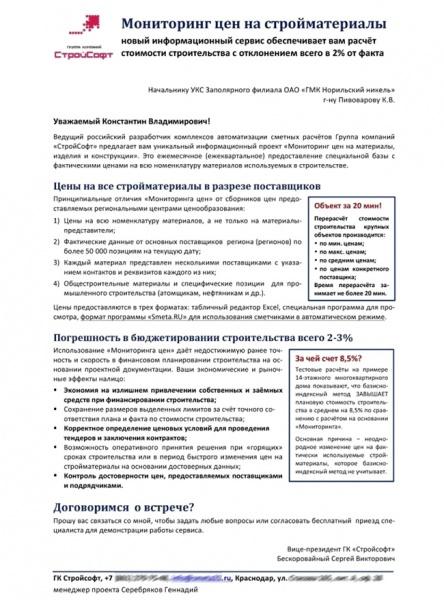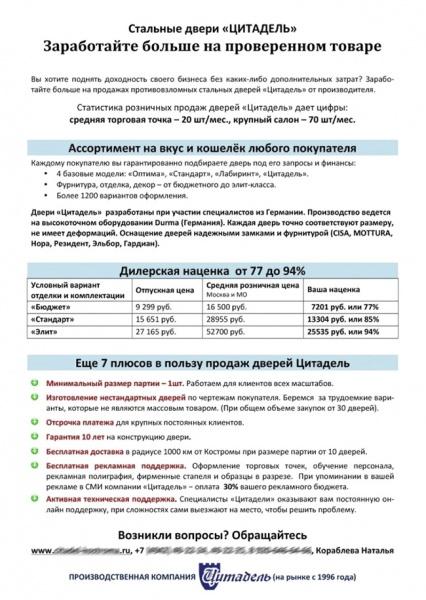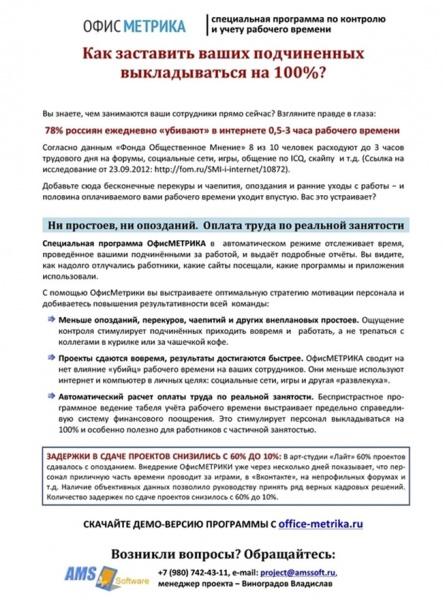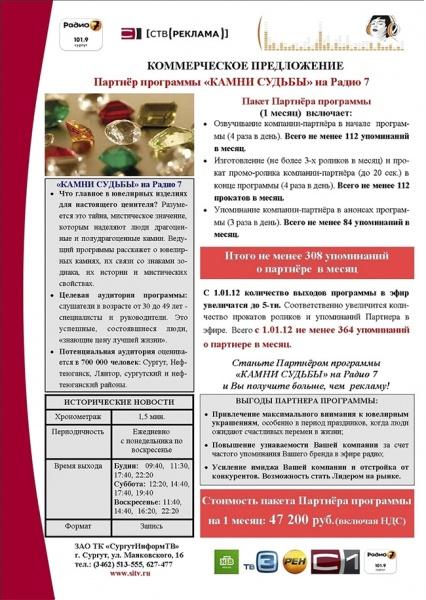How to write a commercial proposal: 4 document types + 5 text requirements + 10 formatting tips + 3 drafting steps + successful and unsuccessful samples.
What is the professionalism of the seller?
The ability to sell the maximum amount of goods.
That is why shop assistants, who work for a percentage of sales, begin to charm the client as soon as he enters their shop, describing in colors the goods that interested him.
Large transactions are made according to a slightly different pattern: here the main role is played by a commercial offer (CP), which helps to distinguish your product or service from a multitude of similar ones.
That is why any seller should know that it will interest a potential client from the first lines and lead to a deal.
What is a commercial offer and how to make it?
What supplier doesn't dream of a big deal with a company that can significantly increase sales and, consequently, revenue?
Yes, everyone dreams!
It would seem that the deal is in your pocket: your goods/services are of high quality, prices are moderate, and you offer good terms of cooperation.
But here's the bad luck: after you sent a letter with your commercial offer, you are not even invited to and the contract floats away to another company.
Why does this happen?
Because you didn’t know how to make a competent CP that would hook the consumer from the first lines.
The commercial offer is the main document of the seller.
This is a kind of marker of the professionalism of the entire company.
And, if this paper is illiterate, boring, long, unkempt, funny, then your company will earn the same reputation.
Would you like to have an illiterate and unkempt partner? I doubt it very much.
Many companies do not bother to carefully write a commercial proposal:
- Considering that you can just send your price list.
- Too lazy to rewrite the old commercial offer, although the company has changed a long time ago and the range of its services has expanded.
- Using bad sample documents that do more harm than good.
- Not understanding the difference between different types of CP.
- Sparing money for a good marketer and copywriter.
And then the leaders are surprised: “How is it? We sent our commercial offer, and they didn’t even call us back?
And that’s why they didn’t call back because you didn’t try to draw up this key document for each organization, but did everything “anyhow”.
But if you familiarize yourself with the basic rules for writing a commercial proposal and manage to make a model worthy of imitation, then increase your income and give a new impetus to the development of the company.
How to write a quotation: 4 main types of documents
You can’t be so careless as to think that you can write one commercial proposal and send it to different clients for years.
This is the main mistake of many entrepreneurs - they do not know the difference between different types of this important document and do not want to spend time studying their potential client.
But both of them are very important for the success and profitability of the business.
1. Cold quotation
You receive cold commercial offers daily by mail - sometimes your mailer qualifies them as spam and sends them to the appropriate folder.
Precisely because the appeal is not personalized, does not take into account the identity of the consumer and is sent to everyone in a row, it rarely works.
But there are exceptions to this rule.
For example, you thought that it would be time to improve your spoken English, but due to lack of time, you still couldn’t find a school or a tutor for yourself.
And then you receive a letter in your mailbox with the subject: “Long wanted to? And we know how to do it quickly and inexpensively.”
Naturally, you will open such a letter, and do not immediately delete it, and if this commercial offer (a similar letter could be sent, for example, by a language school) interests you, moreover, you become their client, this will mean that a cold commercial offer It worked.
It is for such random clients that this type of document is designed.
2. Hot quotation
This is a completely different type of quotation, because it is sent to an already prepared client who is waiting for him.
Such a letter is much less likely to end up in the trash unread.
A hot commercial offer must be compiled and sent when:
- you found out through your channels that a certain large company wants to change the supplier (advertising agencies in the USA work exactly according to this scheme - they try first before others find out about it);
- a potential buyer directly told you that he was waiting for your offer (he could see the advertisement and call, or you yourself contacted him to ask for cooperation).
It is necessary to draw up a hot quotation very seriously in order not to miss your chance to conclude a contract and increase profits.
You won't get another chance to make a positive first impression of your company.
3. Typical commercial offer
Your task is to draw up a competent document and send it to all your potential clients. For example, you are a tour guide.
To conclude an agreement on fruitful cooperation, you need:
- draw up a competent commercial offer;
- find out the email or postal addresses of all travel agencies in your city;
- send them letters;
- wait for someone to be interested in your offer and call back.
Naturally, you make up a standard paper with one text for all your potential employers.
4. Individual commercial offer
Such a document needs to be drawn up when you want to conclude a cooperation agreement with a specific buyer, and the rest are not of much interest to you.
To sensibly draw up an individual commercial offer, you need:
- Study your potential partner.
- Find out exactly what interests him.
- Present your company in the best possible light.
- Describe all the benefits of working with you.
- Address personalized: instead of "Dear colleagues!" write "Dear Ivanov Ivan Ivanovich."
15 rules for drafting a commercial proposal

To competently compose such an important document for each company, you need to find a good sample of a commercial offer and take it as a basis.
And also learn by heart the basic rules for compiling this paper.
Rules for compiling the text of a commercial offer
Naturally, the main thing in the CP is its text.
It depends on what words you describe the benefits of working with you, whether the buyer will respond to your request for cooperation or not.
To make the most competent commercial offer, you should:
Speak the language of the client.
Each field of activity operates with lexical units and terms that are familiar only to professionals.
Your task is to emphasize that you are a professional.
Speak clearly and to the point.
You don't need to ramble on for half a page.
Turned to the client and immediately take the bull by the horns.
In pursuit of the beauty of the text, do not forget about its usefulness.
Of course, you want to impress a potential client, so make sure that the text sounds smooth and beautiful.
This is important, but it is much more important that this text be useful to the buyer and answer all his questions.
Use facts and figures.
Tell us about the achievements and victories of your company, calculate how much the client can save / if he starts working with you, etc.
Don't get too smart.
Yes, it's great that you, as a professional, know so many terms and have a perfect business style, but you should not overload the text with all this.
Keep a sense of proportion: the client should easily understand what is being said, and not wade through the terminology, feeling like an idiot.
Rules for making a commercial offer
You should not think that if you carefully worked on the text of the CP, then you don’t give a damn about its design.
But after all, even before the recipient of the letter begins to read it, he will evaluate it visually and if he sees the crooked arrangement of the text, a solid towel without indents and paragraphs, dirty paper and other flaws, then he may well not read this example of carelessness.
Here are the basic rules for making a commercial offer:
- Choose a simple, concise font (no curlicues) and a size no larger than 16 points.
- Stick to one style of writing: you can't start with a conversational provocative style and then move on to dry business language.
- To make the text easier to read, do not forget about indents, paragraphs, frames, lists, bold or italic key points, etc.
- Do not try to make too big a commercial offer - no one will master this essay of 30 pages - 1-2 pages will be enough.
- Place your company logo on the first page next to the header.
- You should not overload the “header”, indicating everything at once in it, it is better to place the details and contacts at the end of the text.
- Align the text of the document, best "justified".
- Place the message to the potential buyer in the center of the page.
- Be sure to sign the KP, deciphering your signature and indicating the position.
- If you're sending your document via regular mail rather than email, use nice paper and an envelope, and make sure your printer has ink - fuzzy letters won't make a good impression.
To write a competent and selling commercial proposal,
also check out the information in the video:
Sample commercial offer
Compiling a quotation is not so difficult if you have a sample document in front of your eyes that has already worked, helped to get new customers and increase the company's profits.
Here are the steps to follow to create a great business proposal:
Study your potential client.
You do not have to focus on one client, you can work with several at once.
For example, you need to find a market for the baked goods your bakery makes.
You are studying the 5 largest stores that do not have their own bakery in order to send them an individual offer.
You do not have to write 5 different samples, just build on the existing backbone of the received information about the client in order to interest him.
Write the main text.
Start with who you are and what you offer.
Then move on to listing the benefits that the consumer will receive if they partner with you.
Toward the end, be sure to use the motivating form of the verb to provoke the client to action.
For example: “Call us today and get a 20% discount on all services” and the like.
At the end, do not forget to put down your details, contact details and signature.
Work on the design of your commercial offer.
You already know how to beautifully arrange your document.
For easier perception of the text, you can use different colors, font sizes, and so on to highlight, just don’t overdo it so that the sentence doesn’t look comical and frivolous.
If you're sending a cold CV and you're doing it via email, think about the subject line of your email so it doesn't get deleted as spam without even being read.
You can, for example, hit on financial gain: "A chance to save 5,000 rubles a month on computer maintenance."
Some good business proposal examples



Poor business proposal template
Since you already know what a good CP should look like, let's talk about what not to do if you are interested in success.
A good sample commercial proposal should not contain:
- Slang, vuzgarizmy, obscene language, undeciphered abbreviations.
- Incomprehensible moments, unfinished sentences, dots (you do not write a detective or an essay on a free topic, but compose a serious paper).
- Sexual and indecent hints, unless you represent an erotic toy store or some kind of porn site.
- Jokes and humorous sketches, especially if your sense of humor leaves much to be desired.
- Lies and empty promises that you will never be able to fulfill - serious people do not deal with such liars, and they will also create a reputation for you that you will never be able to sell anything else.
- Exaggeration: even if you really want to make the best impression on your potential consumer, you should not write: “We have already helped millions of customers to run cool advertising campaigns,” when the number of your real customers does not even count a dozen.
- Provocations on religious, national, racist and other sensitive topics.
- Negative: “You are unhappy, you are depressed, you are suffering, you are thinking about suicide”, etc.
- Excessive narcissism and narcissism - you should interest the buyer, and not cause him to think: “Oh, we are not on the road with such cool ones, we would have to find someone easier.”
- Water - less empty words, more specifics.
Here's a sample sales pitch that isn't very successful, because it's overloaded with bright colors, small details, and contains too much lyrics:

I don't think you'll have any problems now. how to write a business proposal, which will expand the client base and increase revenues.
Useful article? Don't miss out on new ones!
Enter your e-mail and receive new articles by mail

